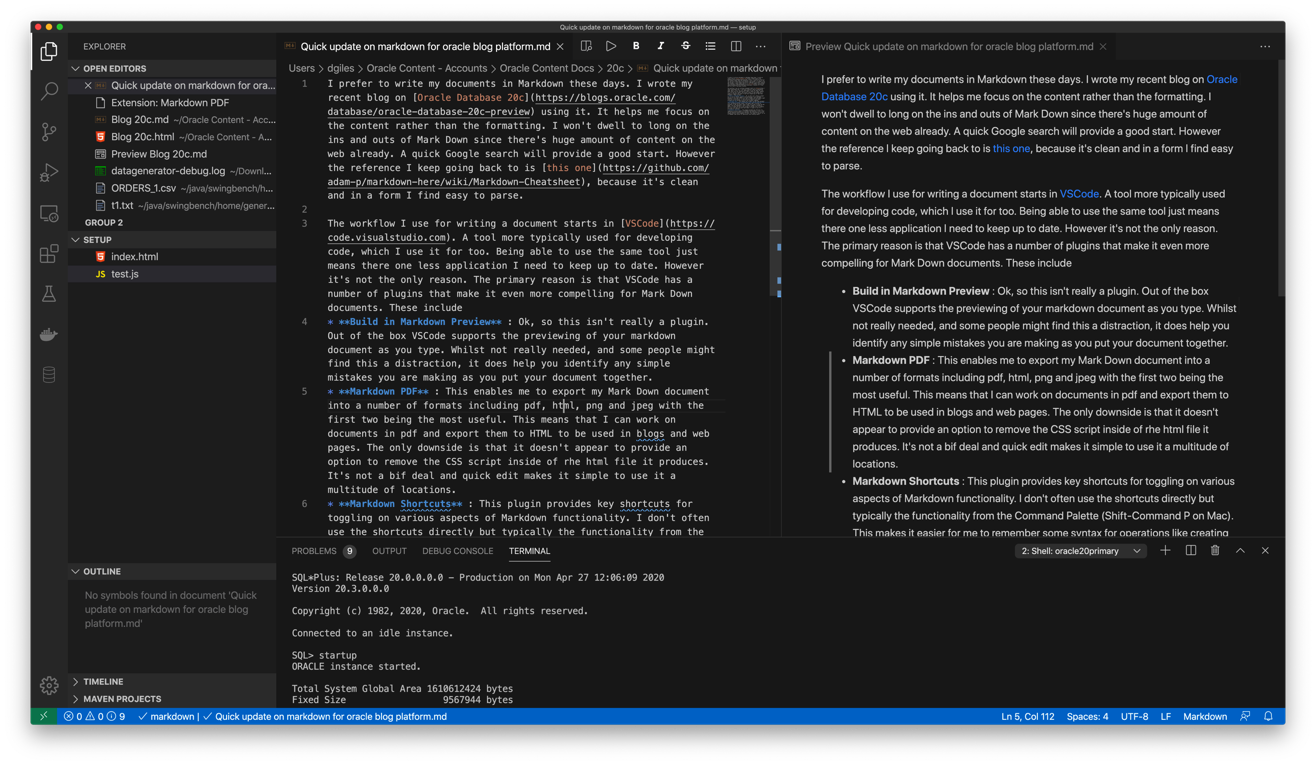markdown
Working in Markdown
28/04/20 14:23 Filed in: Markdown
I prefer to write my documents in Markdown these days. I wrote my recent blog on Oracle Database 20c using it. It helps me focus on the content rather than the formatting. I won't dwell to long on the ins and outs of Mark Down since there's huge amount of content on the web already. A quick Google search will provide a good start. However the reference I keep going back to is this one, because it's clean and in a form I find easy to parse.
The workflow I use for writing a document starts in VSCode. A tool more typically used for developing code, which I use it for too. Being able to use the same tool just means there one less application I need to keep up to date. However it's not the only reason. The primary reason is that VSCode has a number of plugins that make it even more compelling for Mark Down documents. These include

The workflow I use for writing a document starts in VSCode. A tool more typically used for developing code, which I use it for too. Being able to use the same tool just means there one less application I need to keep up to date. However it's not the only reason. The primary reason is that VSCode has a number of plugins that make it even more compelling for Mark Down documents. These include
- Build in Markdown Preview : Ok, so this isn't really a plugin. Out of the box VSCode supports the previewing of your markdown document as you type. Whilst not really needed, and some people might find this a distraction, it does help you identify any simple mistakes you are making as you put your document together.
- Markdown PDF : This enables me to export my Mark Down document into a number of formats including pdf, html, png and jpeg with the first two being the most useful. This means that I can work on documents in pdf and export them to HTML to be used in blogs and web pages. The only downside is that it doesn't appear to provide an option to remove the CSS script inside of rhe html file it produces. It's not a bif deal and quick edit makes it simple to use it a multitude of locations.
- Markdown Shortcuts : This plugin provides key shortcuts for toggling on various aspects of Markdown functionality. I don't often use the shortcuts directly but typically the functionality from the Command Palette (Shift-Command P on Mac). This makes it easier for me to remember some syntax for operations like creating tables.

Comments